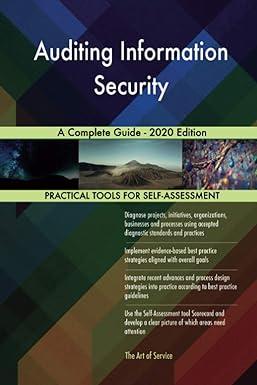Question
Riverbed Corp., which began operations in January 2017, follows IFRS and is subject to a 30% income tax rate. In 2020, the following events took
Riverbed Corp., which began operations in January 2017, follows IFRS and is subject to a 30% income tax rate. In 2020, the following events took place:
| 1. | The company switched from the zero-profit method to the percentage-of-completion method of accounting for its long-term construction projects. This change was a result of experience with the project and improved ability to estimate the costs to completion and therefore the percentage complete. | |||||||||||||||||||||||||||||||||||||
| 2. | Due to a change in maintenance policy, the estimated useful life of Riverbeds fleet of trucks was lengthened. | |||||||||||||||||||||||||||||||||||||
| 3. | It was discovered that a machine with an original cost of $240,000, residual value of $30,400, and useful life of 4 years was expensed in error on January 23, 2019, when it was acquired. This situation was discovered after preparing the 2020 adjusting entries but before calculating income tax expense and closing the accounts. Riverbed uses straight-line depreciation and takes a full year of depreciation in the year of acquisition. The assets cost had been appropriately added to the capital cost allowance (CCA) class in 2019 before the CCA was calculated and claimed. | |||||||||||||||||||||||||||||||||||||
| 4. | As a result of an inventory study early in 2020 after the accounts for 2019 had been closed, management decided that the weighted average cost formula would provide a more relevant presentation in the financial statements than does the FIFO cost formula. In making the change to weighted average cost, Riverbed determined the following:
| |||||||||||||||||||||||||||||||||||||
Analyze each of the four 2020 events described above. For each event, identify the type of accounting change that has occurred, and indicate whether it should be accounted for with full retrospective application, partial retrospective application, or prospective application.
| Type of Accounting Change | Accounted For | |||
| 1. | Accounting Error CorrectionChange in Accounting PolicyChange in Estimate | Full Retrospective ApplicationPartial Retrospective ApplicationProspective Application | ||
| 2. | Accounting Error CorrectionChange in Accounting PolicyChange in Estimate | Full Retrospective ApplicationPartial Retrospective ApplicationProspective Application | ||
| 3. | Accounting Error CorrectionChange in Accounting PolicyChange in Estimate | Full Retrospective ApplicationPartial Retrospective ApplicationProspective Application | ||
| 4. | Accounting Error CorrectionChange in Accounting PolicyChange in Estimate | Full Retrospective ApplicationPartial Retrospective ApplicationProspective Application |
eTextbook and Media
List of Accounts
Prepare any necessary journal entries that would be recorded in 2020 to account for events 3 (ignore current-year income tax considerations) and 4. (Credit account titles are automatically indented when the amount is entered. Do not indent manually. If no entry is required, select "No Entry" for the account titles and enter 0 for the amounts.)
| Account Titles and Explanation | Debit | Credit |
| Event #3 | ||
| Event #4 | ||
Step by Step Solution
There are 3 Steps involved in it
Step: 1

Get Instant Access to Expert-Tailored Solutions
See step-by-step solutions with expert insights and AI powered tools for academic success
Step: 2

Step: 3

Ace Your Homework with AI
Get the answers you need in no time with our AI-driven, step-by-step assistance
Get Started


